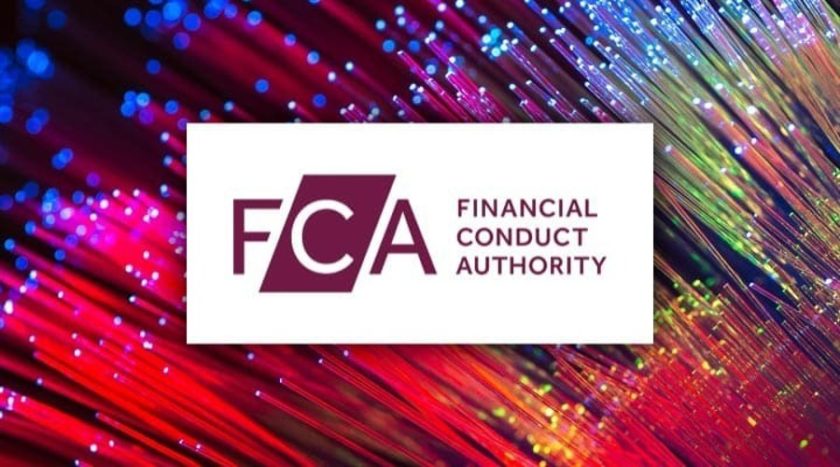Six Crypto Ratings Agencies & Index Trackers You Should (Or Maybe Shouldn’t) Know About
September 29, 2018 by Paul de Havilland
Time to take a look at crypto ratings agencies, advisors, and indexes. Wherever there’s a market, there’s a ratings agency. The cryptocurrency industry has spawned many of the same evils and irritants as traditional financial instruments: fraud, embezzlement, corruption, Chinese government crackdowns, and sleazy white men in pinstripe suits stealing from unsophisticated, hard working ordinary people. And ratings agencies. Six ratings agencies, advisors, and index trackers have emerged as the most prominent and notorious. Who are they?
Also see: Circle Hails USD Coin, Joining the Growing Stablecoin Stable
Subscribe to the Bitsonline YouTube channel for great videos featuring industry insiders & experts
Crypto Ratings is a Fool’s Errand… But Somebody’s Gotta Do It
The emergence of ratings agencies and indexes in crypto was always inevitable. People need to find ways to have their data and opinions–qualified or otherwise–monetized. Let’s shake the six most prominent crypto ratings agencies and indexes down.
CCID–Zero Degrees of Separation from the Chinese Government
CCID is the China Center for Information Industry Development (yep, the acronym is missing an “I” and the center should be preceded by an adjective). The CCID has created what it calls is the Global Public Chain Assessment Index for ranking crypto assets (that are illegal to possess or trade in China).
The criteria the group created for coins to be included in its evaluations, according to its website, are that the project has its own mainnet, nodes are public and can be freely created, block information can be viewed publicly, it has open source code, and the project has a website and contact details. Of course, the free flow of information, openness, and transparency are hallmarks of the Chinese government, so it is of little surprise their ratings agency values the same things.
The projects are then graded for “comprehensive level of public chain support for practical applications, involving node deployment, wallet application, development support, and application implementation”. Calculating crypto ratings really is a complex endeavor.
Announced monthly, their rankings typically show EOS on top. September 20th marked their fifth monthly release, with bitcoin coming in at 16th. EOS and Ethereum held onto the top two positions, with BitShares soaring from 12th to 3rd. NEO and Steem rounded out the top five.
It is difficult to take the CCID’s rankings seriously, given cryptos are illegal in mainland China and the CCID is an agency of the government. Their work is akin to the U.S. Food and Drug Administration ranking Schedule 1 controlled substances for their beneficial properties. Close your eyes long enough and you can see the headline now: Krokodil Edges Out Heroin For Top Place in FDA October Ratings.
Weiss Research Inc. Independent, Unbiased, Accurate… Trusted?
Weiss has been in the ratings game for some time. In crypto, you can subscribe to their weekly ratings updates for just shy of $500 USD a year. The subscription is probably not worth the investment, however, as they tend to have problems keeping their ratings from being leaked online before being published.
This should sound off alarm bells already. A crypto ratings agency that cannot secure its own data should be approached with some degree of caution.
Weiss ranks over 70 cryptocurrencies according to four indexes: the risk index; reward index; technology index; and fundamental index. The company then grants cryptos a ranking from A+ down to E.
Weiss themselves get an E for the last of their own quadruple branding items: “Trusted”. In 2006, Weiss Research faced SEC cease and desist proceedings of their ratings and advisory services for failing to register with the regulator as financial advisors, a violation of securities regulations.
To rub salt into the wounds for their paying subscribers, it was found that their promotions claiming “subscribers who followed our recommendations scooped up 400% profits,” and language such as “bagged profits like 400% … 39% … 217% … 100% … 374% … 66% … 171% … 222%” belied reality. Weiss’ own internal records–reviewed by the SEC–showed that any subscriber to many of Weiss’ information services would have lost money if they followed the company’s advice.
Fundstrat’s Bitcoin Misery Index
Tom Lee’s investment and advisory company Fundstrat Global Advisors created a Bitcoin Misery Index (BMI) that seeks to track indicators of the levels of misery felt by holders of bitcoin. Thought to be the first ever crypto price tracker-predictor, it relies heavily on current price and price volatility for its predictive power.
Tom Lee is a long-time bitcoin bull. Fundstrat has a number of crypto indicators and trackers to complement its suite of traditional asset analysis products. The BMI is said to be at “misery” when it is below 27, on a scale of zero to 100. When it is in misery, Lee says we should expect a price run-up.
However, Lee has identified a new predictor for the bitcoin price. When comparing the MSCI Emerging Markets Index vs S&P 500 to the bitcoin price, Lee identified a direct correlation. He explains that the relationship is driven by the wealth effect (investors in emerging markets have more money to buy bitcoin with if their stocks are rising), and the risk effect (emerging market stocks and bitcoin are both risk-on asset classes).
Thomson Reuters’ Bitcoin Sentiment Tracker
Back in March, respected news outlet Thomson Reuters announced it had added a bitcoin sentiment data feed to its MarketPsych Indices (TRMI), which it publishes in partnership with MarketPsych Data LLC.
According to a press release, the data feed analyzes “news and social media in real time across 2,000 top global news sites and 800 global financial social media sites” to measure sentiment of a range of asset classes. It added bitcoin to the feed this year by adding tracking of over 400 cryptocurrency related news and social media sites.
Intended for institutional investors, indications of its level of accuracy have been scant. But the MarketPsych indices brochure does have rather catchy phrasing:
“Where there are markets, there are emotions. Where there are emotions, there are cycles. Where you understand cycles, you profit.”
Speaking of Catchy Phrasing, Palm Beach Anyone?
Perhaps these guys don’t fit neatly into the ratings agency or index tracking category, but their story was too tempting to omit. The Palm Beach Research Group is a publishing company that produces monthly newsletters to paid subscribers.
The company put their imagination to work when naming one newsletter, The Palm Beach Letter. Another, Palm Beach Confidential, offers small-cap and crypto investment advice employing the tactic of “asymmetric investing”, which, according to the company, “allows you to risk as little as $100 for a chance to make $1,000, $10,000, or even $100,000”.
The advice their newsletters contain, if their advertising is to be believed, must be drafted by incredible visionaries. The publisher claims that following the advice in the newsletter will double your money at least once a year.
This is clearly intended for the investor so lacking in sophistication that authorities could only feasibly protect them from financial ruin by classifying household items and consumables like toilet paper, canned fruit, and door stops as regulated securities.
From the Ridiculous to the Credible
Bloomberg teamed up with Mike Novogratz’s Galaxy Digital Capital Management this year to create the Bloomberg Galaxy Crypto Index (BGCI). The index began tracking ten USD-traded cryptocurrencies. It now tracks 150.
Alan Campbell, the Global Product Manager for Bloomberg Indices, appears to lack the aspirational drive (or the outlandish snake oil salesman’s pitch) of Palm Beach, stating simply:
“The index brings our rigorous approach to index construction to cryptos and will provide investors with a transparent benchmark to gauge the performance of the broader market.”
Rigorous approach! Who needs a rigorous approach when there’s thousands to be made from a mere hundred dollars through asymmetric investing?
In The End…
In the end, common sense ought to prevail. Crypto ratings are difficult to get right. Stick to information published by credible companies with fully declared research methodologies and preferably no history of securities violations.
Sound off below. Do you have any faith in these crypto ratings agencies, advisors, or index trackers when it comes to predicting price movements?
Images via Pixabay










